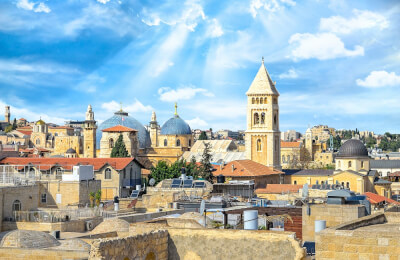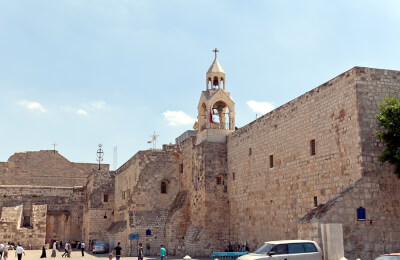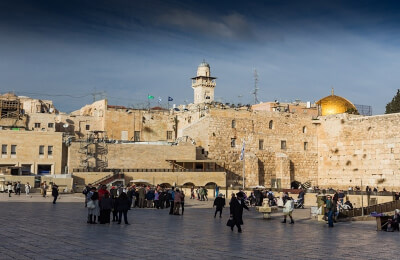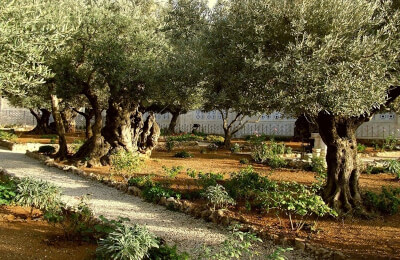
Walking Jerusalem Promotion

Jerusalem & Bethlehem (up to 8 people) Promotion

Jerusalem & Bethlehem (up to 18 people) Promotion
We also found excursions from other cities that are close to your departure city
Other excursions that also deserve your attention
The Upper Room: A Place of Sacred Significance in Israel's Heart
Introduction
In the heart of Jerusalem, amid the bustling streets and ancient stone walls, lies a place of profound spiritual significance and historical resonance – the Upper Room. This unassuming chamber, nestled within the vibrant tapestry of the Holy Land, holds a special place in the hearts of many. Join us as we embark on a journey to explore the Upper Room, delving into its rich history, spiritual importance, and intriguing facts that make it a unique destination in Israel.
The Upper Room: An Overview
The Upper Room, often referred to as the Cenacle, is a revered site located on Mount Zion in Jerusalem. This sacred chamber is situated just outside the Old City's walls, near the Zion Gate. Its name is derived from its location on the upper floor of a building that traditionally commemorates the site of the Last Supper of Jesus Christ with his disciples.
**Interesting Fact:** The Upper Room is a site of religious significance for both Christians and Jews, each having their own historical narratives and traditions associated with it.
A Glimpse into the Past
The history of the Upper Room is intertwined with significant events in the Christian and Jewish traditions.
For Christians, the Upper Room is most famously known as the place where Jesus celebrated the Last Supper with his disciples before his crucifixion. This event, recounted in the New Testament, is central to the Christian faith and marks the institution of the Eucharist or Holy Communion.
**Interesting Fact:** The Gospel of Mark describes how Jesus instructed his disciples to find a man carrying a jar of water, follow him to the Upper Room, and prepare the Passover meal there—a detail that adds an air of mystique to the site.
For Jews, the Upper Room has historical significance as well. It is believed to have been the site of King David's tomb, a connection that ties the location to the Jewish historical narrative.
**Interesting Fact:** King David, one of the most iconic figures in the Hebrew Bible, is often revered as the king who established Jerusalem as the capital of the Kingdom of Israel.
The Architecture and Design
The Upper Room, as it stands today, is a mixture of various architectural styles, reflecting the many transformations it has undergone over the centuries. The current structure dates back to the Crusader period, which began in the 11th century.
**Interesting Fact:** The Gothic architectural elements of the Upper Room are notable, including pointed arches and ribbed vaulting, which are characteristic of the Crusader era.
The chamber itself is relatively small, with stone walls and a low, vaulted ceiling. It exudes an aura of simplicity and spirituality, making it a fitting place for reflection and prayer.
Spiritual Significance
The Upper Room is a site of immense spiritual importance for Christians around the world. It is revered as the location of the Last Supper, where Jesus instituted the practice of Holy Communion. For Christians, this site is a symbol of unity, remembrance, and devotion.
**Interesting Fact:** The room has been the site of countless Christian pilgrimages for centuries. Pilgrims from all corners of the globe visit the Upper Room to connect with the profound events that transpired here.
In addition to its Christian significance, the Upper Room holds a special place in Jewish tradition. Many believe that it was used as a location for various important Jewish events, including the gathering of disciples following Jesus' crucifixion and the outpouring of the Holy Spirit on Pentecost.
**Interesting Fact:** The Upper Room has become a symbol of the interwoven history and traditions of Judaism and Christianity in Jerusalem, highlighting the unique character of the Holy City.
Modern-Day Exploration
Visitors to the Upper Room can experience the spiritual ambiance and historical resonance of this sacred site. Key attractions and experiences include:
1. **Guided Tours**: Knowledgeable guides provide insights into the historical and religious significance of the Upper Room, bringing to life the events that unfolded here.
2. **Interfaith Dialogues**: The Upper Room has become a symbol of religious harmony and interfaith dialogue, with events and discussions held to promote understanding and peace among different faiths.
3. **Archaeological Discoveries**: Ongoing archaeological excavations in the vicinity of the Upper Room have unearthed relics and artifacts that shed light on its rich history.
**Interesting Fact:** In 1948, during the War of Independence, the Upper Room was closed to the public due to its location on a military front line. It was later reopened and has since been a place of worship and reflection.
Preservation Efforts
Preserving the Upper Room is a delicate endeavor, given its historical and spiritual importance. Various organizations and religious groups have taken up the mantle of safeguarding this sacred site and ensuring that it remains accessible to pilgrims and visitors.
**Interesting Fact:** The Upper Room has undergone numerous renovations and restorations over the centuries, with each phase preserving and protecting the site's unique character and significance.
Conclusion
The Upper Room stands as a symbol of spiritual unity, transcending the boundaries of religious tradition. It is a place where history, faith, and reverence converge, reminding us of the profound events that unfolded within its walls. As we explore this sacred chamber, we are reminded that it is not just a physical space but a testament to the enduring legacy of Jerusalem, a city where the past and the present coexist, and where people from different faiths and backgrounds come together to find solace and inspiration. In the Upper Room, the echoes of the Last Supper continue to resonate, and the spirit of unity and devotion lives on.




